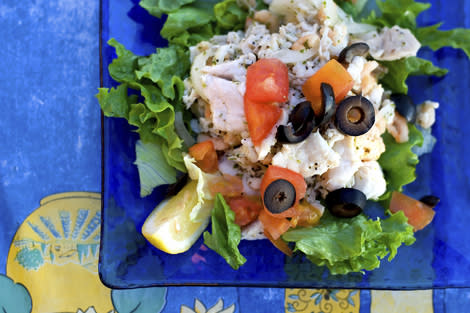Fish for Holy Week- Give Ceviche a Try
By: Chef Ariel Rodriguez Palacios
It's Easter time again! Time flies so fast and just as quickly the season of eating chocolate has returned given that the holiday is exactly about that for kids: chocolate eggs, chocolate bunnies! I was crazy about them when I was younger … Of course, Easter is about so much more than just chocolate, candies and surprises. In my family, it was always a reason to celebrate, which is why I have such fond memories of this tradition. All generations gathered around the table to share a special menu. And that's wonderful. And as customary, the menu for Holy Week, leading to Easter, always included some type of fish…
Nine alternatives to Easter candy
I love cooking fish, and that's another reason why I love this time of the year. But you have to take important precautions whenever you're going to eat fish. This is important. First of all, always buy fresh fish from a trustworthy vendor. After taking it home, wash it very well and make sure all the bones have been removed. Even if the fishmonger tells you there's no pin bone left in the fish, it's better to still check it yourself. And this is an critical step: Never interrupt "the cold chain"! If you're going to cook fish, keep it in the freezer until the very last minute. All of these measures will help us cook a delicious dish our children will enjoy as much as chocolate, if not more. And that's saying something!

What about some ceviche this year?
Ceviche was originally invented in … in … in … in (well, I just got myself in some trouble) "the Pacific coast of South America". Let's leave it at that, and avoid a flurry of Peruvian and Ecuadorian complaints about its origin. The truth is that ceviche is a traditional dish in both of these countries, as well as in Northern Chile, Mexico and basically every country in Central America. Even though each region has a different version of the dish, we can say that, in general, ceviche is prepared with pieces of fish marinated in lime juice, onion, chili pepper and salt. Thanks to the acidity of lime, you're essentially "cold cooking" the fish, which is the typical way to prepare this plate. There's also vegetable ceviche and even red meat ceviche, but today we are going to focus on the seafood version.
Is ceviche one of the most popular food trends of 2012?
We are going to make our ceviche Peruvian-style, which is the most popular kind. We can try the Ecuadorian version next time; this way, everyone's happy! We are going to need about 2 pounds of any type of white fish fillets (grouper, pollock or sole), 8 to 10 limes, 2 red onions, 4 cloves of garlic, 4 chili peppers, cilantro and salt.
After washing the fillets, dice them into ½ inch cubes, and place them in a glass bowl. Add chopped garlic cloves, finely minced peppers, freshly squeezed lime juice and cilantro. As an optional step, you can add pepper or ginger. Set aside. Meanwhile, wash the onions in salt water and chop them up finely; add them to the mixture at the very end.
The fish should be ready in about 20 minutes, and you'll notice that the lime juice has turned white. This marinade is called "tiger's milk" (leche de tigre). The most typical way to serve ceviche is to accompany it with corn kernels and slices of cooked sweet potato. Both are great side dishes to this very traditional plate.
Learn more about Buenos Aires born Chef Ariel Rodríguez Palacios
